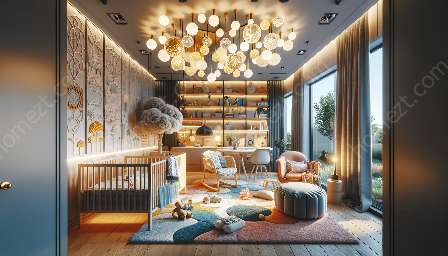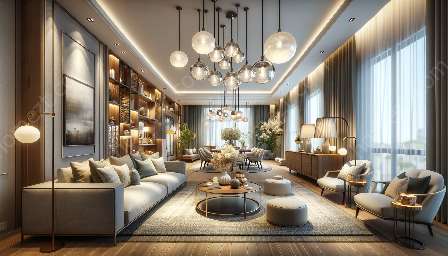Lighting design is an essential aspect of creating a comfortable and stimulating environment for babies and young children in nurseries and playrooms. By understanding the principles of lighting design and incorporating them into these spaces, parents, caregivers, and designers can ensure that the lighting not only serves its functional purpose but also enhances the overall experience for the children.
The Importance of Lighting Design
In a nursery or playroom, lighting design plays a crucial role in promoting a nurturing and engaging atmosphere. Proper lighting can contribute to the child's well-being by providing a sense of security, aiding in their visual development, and setting the mood for various activities. It's important to consider both natural and artificial lighting, as well as the specific needs of the young occupants.
Creating an Attractive and Functional Lighting Plan
When designing the lighting for a nursery or playroom, several factors should be taken into account. These include the layout of the space, the activities that will take place, and the age range of the children. Here are some key considerations for creating an effective lighting plan:
- Balance Natural and Artificial Lighting: Natural light is beneficial for children's well-being, so it's important to maximize the use of daylight in these spaces. However, artificial lighting is also necessary, especially for evening activities or during dark, overcast days. Finding a balance between the two can help create a harmonious lighting environment.
- Adjustable Lighting: Children's activities vary throughout the day, and the lighting should be adaptable to suit different needs. Installing dimmer switches or using lamps with adjustable brightness can provide flexibility in creating the desired ambiance for different activities, such as playtime, reading, or naptime.
- Color Temperature: The color temperature of lighting can significantly impact the mood of a space. Warmer light (lower color temperature) can create a cozy and calming atmosphere, while cooler light (higher color temperature) can make the space feel more energizing and invigorating. Considering the intended use of the nursery or playroom can help determine the appropriate color temperature.
- Safety and Accessibility: It's crucial to ensure that the lighting fixtures are secure and child-friendly. Opt for fixtures that are out of reach of children, or utilize protective coverings to prevent accidental contact with hot bulbs or sharp edges. Additionally, make sure that light switches and controls are easily accessible to both children and adults.
Compatibility with Nursery and Playroom Needs
When designing the lighting for a nursery or playroom, it's essential to consider the specific needs of these spaces. Here are some tips for creating lighting that is compatible with the requirements of nurseries and playrooms:
- Sleep-Friendly Lighting: For nurseries, soft, dimmable lighting can help create a soothing environment for naptime or bedtime. Avoiding harsh, glaring lights can promote a sense of calm and relaxation.
- Colorful and Playful Lighting: Playrooms can benefit from bright and colorful lighting that adds an element of fun and excitement. Consider using decorative lighting elements such as string lights, colorful lamps, or playful light fixtures to spark creativity and playfulness.
- Task Lighting for Activities: Ensure that there is adequate task lighting for specific activities such as reading, crafting, or puzzles. Adjustable desk lamps or pendant lights can provide focused illumination for these tasks, promoting concentration and engagement.
- Nighttime Lighting: Installing gentle nightlights can provide comfort and reassurance for children who may be afraid of the dark. Dim, soft nightlights placed strategically in the nursery or playroom can help children feel secure during the night.
Conclusion
Lighting design is a crucial element in creating a nurturing and inspiring environment for children in nurseries and playrooms. By understanding the principles of lighting design and considering the specific needs of these spaces, parents and designers can create lighting plans that are not only compatible with the needs of young children but also contribute to their overall well-being and enjoyment. Whether it's harnessing natural light, providing adjustable illumination, or incorporating playful lighting elements, a well-thought-out lighting design can make a significant difference in shaping a positive and enriching experience for children.



